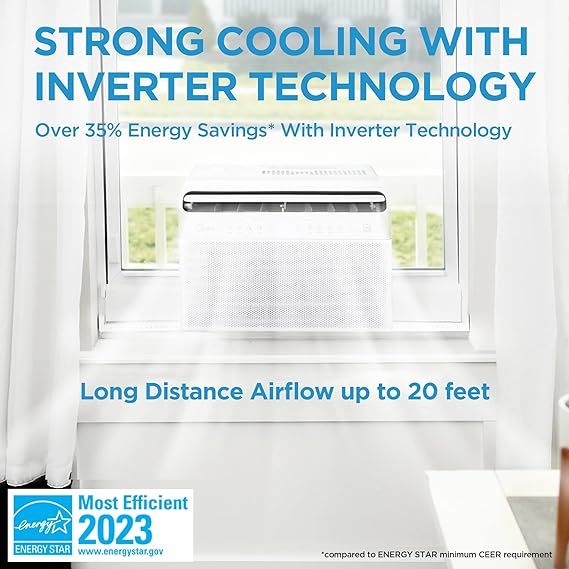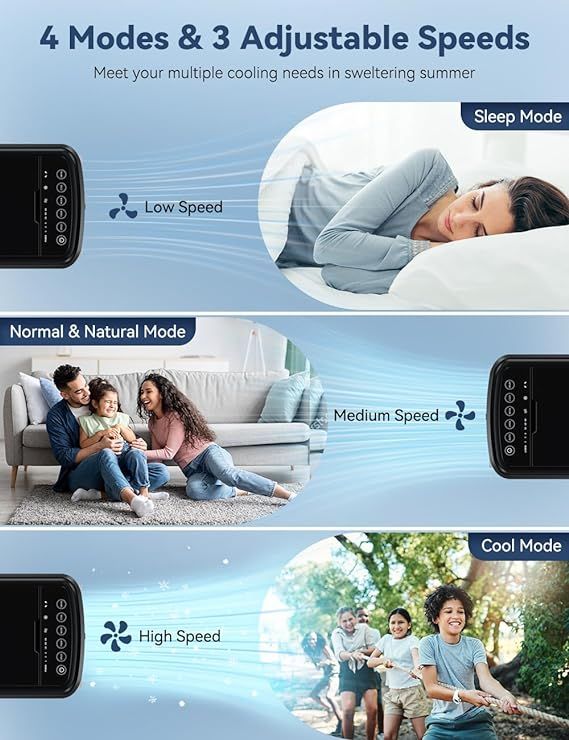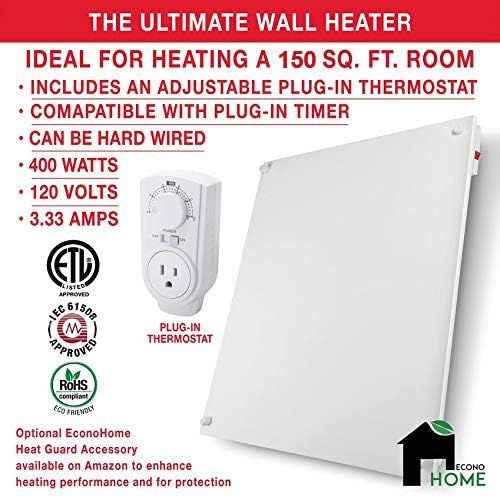Explore the Different Types of Home Heating and Cooling Systems for Your Comfort
-
- Evaluating Central Heating Options for Your Home
- Comparative Costs of Heating Solutions
-
- Furnace Efficiency Ratings
-
- Understanding the Differences Between Ducted and Ductless Systems
- Choosing the Right Cooling System for Your Climate
- Maintenance Tips for Prolonging the Life of HVAC Equipment
- Calculating Heating and Cooling Needs Based on Square Footage
- Exploring Energy-Saving Features in Modern HVAC Systems
- Variable Speed Technology
-
- High SEER Ratings
- Q&A:
- What are the main types of home heating systems?
- How do different cooling systems work?
- What factors should I consider when choosing a heating or cooling system?
- What are the primary energy sources for heating systems?
- How can I improve the efficiency of my existing HVAC system?
- What are the main types of home heating systems covered in "HVAC 101"?
- Reviews

Consider investing in a high-efficiency gas boiler for warmth during the colder months. These units provide reliable performance while keeping energy costs down. If cooling is your priority, a ductless mini-split system offers flexibility. This option allows you to control temperatures in individual rooms, optimizing comfort without the need for extensive ductwork.
For those living in milder climates, a heat pump can serve dual purposes, providing both warmth and refreshing air. These units transfer heat rather than generate it, which enhances energy savings. If you prefer traditional methods, a radiant floor setup ensures uniform heat distribution, creating a cozy atmosphere throughout the space.
When selecting an air conditioning unit, make sure to look for models equipped with inverter technology. This feature allows for precise temperature control and reduces energy consumption by adjusting the compressor speed. Additionally, a programmable thermostat will enable smart scheduling, minimizing waste while maximizing comfort for your family.
Assess the layout of your residence before making a choice; the right system will not only improve comfort but also enhance the overall efficiency of your living space.
Evaluating Central Heating Options for Your Home
Consider installing a gas furnace for its quick response and cost-effectiveness. These units are widely used and can offer significant savings on utility bills compared to electric alternatives. Before making a decision, check local gas prices to ensure it remains the most economical choice.
Comparative Costs of Heating Solutions
The long-term operational costs play a significant role. Here is a breakdown of average unit prices and installation expenses for different systems:
| System Type | Average Unit Cost | Installation Cost |
|---|---|---|
| Gas Furnace | $2,000 - $5,000 | $500 - $2,500 |
| Electric Furnace | $1,500 - $3,500 | $500 - $1,500 |
| Heat Pump | $3,000 - $8,000 | $1,000 - $3,000 |
| Boiler System | $3,000 - $7,000 | $1,500 - $4,000 |
Furnace Efficiency Ratings

Review efficiency ratings when selecting a unit. A higher Annual Fuel Utilization Efficiency (AFUE) rating indicates better performance:
- AFUE of 90% or more: Excellent efficiency.
- AFUE between 80% to 89%: Good efficiency.
- AFUE below 80%: Consider replacement.
Consider environmental impact. Opt for ENERGY STAR® certified models for reduced emissions and optimal energy usage. Evaluate installation location carefully; accessibility for repairs and maintenance is key.
Understanding the Differences Between Ducted and Ductless Systems
Choose ducted or ductless solutions based on your home's layout and specific needs. Both options provide distinct benefits that cater to various situations.
- Ducted Systems:
- Ideal for larger spaces where centralized air circulation is essential.
- Utilizes a network of ducts to distribute conditioned air, offering consistent temperatures throughout.
- More noticeable installation; requires significant modifications within walls or ceilings.
- Can reduce noise levels since the main unit is often located away from living areas.
- Ductless Systems:
- Perfect for smaller rooms or specific areas needing targeted climate control.
- Installation is less invasive; individual units mounted on walls or ceilings connect directly to an outside compressor.
- Higher energy efficiency as there is no air loss through ducts.
- Flexible zoning options allow for customized comfort in different parts of the home.
Evaluate your space requirements, energy efficiency goals, and budget to determine which solution aligns best with your situation. Consider consulting a specialist for tailored advice to ensure optimal performance.
Choosing the Right Cooling System for Your Climate
Select a ductless mini-split for regions with mild summers. These units provide versatility and energy efficiency without extensive installation costs. They're perfect for smaller spaces or homes without existing ductwork.
If you live in an area with extreme heat, consider central air conditioning. This option maintains consistent temperatures throughout larger homes. Ensure you select a model with a high Seasonal Energy Efficiency Ratio (SEER) to minimize energy costs.
For those in humid climates, a swamp cooler can be effective. This evaporative cooling system uses water to cool air, making it suitable for dry regions. However, it may not perform well during high humidity periods.
Individuals in coastal areas should assess salt air corrosion when choosing a system. Look for models with corrosion-resistant features to prolong their lifespan and maintain performance.
In places with fluctuating temperatures, a heat pump offers year-round comfort. It can provide both cooling and heating, making it ideal for varying climates while remaining energy-efficient.
Evaluate your home's insulation before selecting a cooling method. Poorly insulated spaces may require additional cooling capacity, so upgrading insulation can improve overall performance and cost-effectiveness.
Maintenance Tips for Prolonging the Life of HVAC Equipment
Change filters regularly, at least every 1-3 months, to ensure clean airflow and prevent strain on components.
Schedule annual inspections conducted by a qualified technician to identify potential issues before they escalate.
Keep indoor and outdoor units clear of obstructions, such as debris, furniture, or vegetation, to promote adequate airflow.
- Check ducts for leaks and seal any gaps with appropriate materials to optimize performance.
- Clean the condenser coils and evaporator coils at least once a year to enhance heat exchange efficiency.
- Maintain proper refrigerant levels; low refrigerant can lead to inefficient operation and compressor damage.
Use a programmable thermostat to optimize temperature regulation and reduce energy consumption when not at home.
Inspect the drainage system regularly to ensure it is clear and functioning, as clogged drains can cause water damage and mold growth.
- Turn off the system during extreme weather events to prevent unnecessary wear and tear.
- Make sure all electrical connections are secure and free from corrosion to ensure optimal operation.
Keep an eye on system performance, such as unusual sounds or odors, as they can indicate underlying problems requiring immediate attention.
Calculating Heating and Cooling Needs Based on Square Footage
To determine the appropriate capacity for temperature regulation in your space, begin by calculating the total square footage. Multiply the length by the width of each room to get the area, then sum these figures for the entire property.
A general rule of thumb is to allocate 20 BTUs (British Thermal Units) per square foot for optimum comfort. For example, a 1,500 square foot residence would require approximately 30,000 BTUs. Adjust this figure based on insulation quality, ceiling height, and climate variations. Poorly insulated areas or extreme climates may necessitate an increase in BTUs.
Consider additional factors such as the number of windows, the presence of thermal mass (like stone walls), and the types of heat-generating appliances within the space. Each window can add approximately 1,000 BTUs to the total, while appliances should be accounted for according to their specifications.
A professional assessment can refine these calculations further. However, this basic formula provides a solid starting point for determining your heating and cooling requirements effectively.
Exploring Energy-Saving Features in Modern HVAC Systems
Implement smart thermostats to optimize temperature settings automatically. These devices learn household patterns and adjust accordingly, reducing energy consumption significantly during unoccupied periods.
Variable Speed Technology

Look for equipment featuring variable speed compressors and fans. This technology enables units to operate at different capacities, allowing for precise climate control, minimizing energy use while maintaining comfort.
High SEER Ratings
Prioritize units with a high Seasonal Energy Efficiency Ratio (SEER). A higher SEER rating indicates better cooling efficiency, ensuring you save on electricity bills while gaining superior temperature control.
Consider systems with two-stage or modulating gas valves. These components enable the appliance to operate at lower settings for extended periods, enhancing energy savings while reducing wear on the system.
Incorporate zoning systems to control airflow in different areas of the residence. This feature allows you to heat or cool specific rooms based on usage, leading to further reductions in energy expenses.
Regular maintenance, including filter replacements and system inspections, can greatly enhance energy performance. Ensure proper airflow and prevent obstructions to uphold peak operational efficiency.
Invest in renewable energy solutions, such as solar panels, to power your residential setup. This transition not only reduces your carbon footprint but can also lead to substantial savings on utility costs in the long run.
Q&A:
What are the main types of home heating systems?
Home heating systems primarily include forced air systems, hydronic (hot water) systems, electric systems, and radiant heating systems. Forced air systems use ducts to distribute warmed air, hydronic systems circulate hot water through radiators or underfloor tubing, electric systems utilize electric resistance heating, and radiant heating provides warmth directly from heated surfaces. Each type has its advantages and disadvantages, depending on energy source, cost, and installation complexity.
How do different cooling systems work?
Cooling systems generally consist of central air conditioning, ductless mini-split systems, window units, and evaporative coolers. Central air conditioning cools the entire home through ductwork, while ductless mini-splits offer flexibility for individual rooms without ducts. Window units serve as standalone cooling options for single rooms, and evaporative coolers use water evaporation to cool air, making them more energy-efficient in certain climates. The best system for your home will depend on size, layout, and personal preference.
What factors should I consider when choosing a heating or cooling system?
When selecting a heating or cooling system, consider your home's size and layout, local climate, energy efficiency ratings, installation and operational costs, and maintenance requirements. It's important to assess whether you need a system that can heat and cool simultaneously or if you can use separate systems. Additionally, think about how the system integrates with your home's existing infrastructure and whether you want a central or localized solution.
What are the primary energy sources for heating systems?
Heating systems can be powered by several energy sources, including electricity, natural gas, propane, oil, and solar energy. Electric systems are typically easy to install but can be more expensive to operate, while natural gas and propane systems offer efficient heating for larger spaces. Oil heating remains popular in some areas, and solar heating provides an eco-friendly alternative for those looking to reduce their carbon footprint. The choice of energy source often depends on availability and cost in your region.
How can I improve the efficiency of my existing HVAC system?
To enhance the efficiency of your current HVAC system, consider regularly servicing your unit, replacing or cleaning filters, sealing duct leaks, and ensuring proper insulation in your home. Installing a programmable thermostat can also optimize heating and cooling schedules, reducing energy consumption when you're not home. Additionally, using ceiling fans can help circulate air, making your living spaces feel cooler in the summer and warmer in the winter. Simple maintenance and strategic upgrades can lead to significant energy savings.
What are the main types of home heating systems covered in "HVAC 101"?
"HVAC 101" covers several types of home heating systems including forced air systems, radiant heating, and hydronic heating. Each system has its own method of heat distribution: forced air systems use a network of ducts to circulate warm air, radiant heating warms surfaces directly, and hydronic systems utilize hot water to heat the space. The guide provides a detailed comparison of these systems to help homeowners understand which might be best for their needs.
Reviews
David
I recently purchased "HVAC 101: Types of Home Heating and Cooling Systems," and I must say, it really exceeded my expectations. The book breaks down complex HVAC concepts in an easy-to-understand manner, making it accessible for someone like me who isn't an expert in the field. The clear explanations of different heating and cooling systems helped me decide what would work best for my home. I appreciated the detailed illustrations and diagrams that accompanied the text, making it easier to visualize how each system operates. The author also provides practical tips for maintenance and energy efficiency, which I found to be very helpful. What I liked most was the straightforward approach; nothing felt overwhelming. For anyone looking to learn about HVAC systems without getting lost in technical jargon, this book is a solid choice. If you're considering upgrading or simply want to understand your current setup better, I highly recommend giving this book a read.
Michael
I recently picked up "HVAC 101: Types of Home Heating and Cooling Systems," and I must say, it's a solid resource for anyone looking to understand their home HVAC options. The book breaks down various heating and cooling systems in a way that's easy to grasp, even for someone without a technical background. Each system type is well-explained, and the pros and cons are laid out clearly, which helped me make informed decisions for my home. The illustrations and diagrams are particularly helpful, allowing for quick visual reference. I appreciated the sections that addressed energy efficiency and maintenance tips, as they can save you money in the long run. This book is great for homeowners, DIY enthusiasts, or anyone curious about HVAC systems. It's straightforward and informative without unnecessary jargon. If you're looking to enhance your knowledge about home heating and cooling, I recommend giving this book a read. It's a practical guide that I find myself referring back to often.
Michael Johnson
I recently purchased "HVAC 101: Types of Home Heating and Cooling Systems," and it has been a great addition to my home improvement library. The book offers clear explanations of different heating and cooling systems, making it easy for anyone to understand the basics. The organization is straightforward, and the illustrations help clarify complex concepts. I appreciated the detailed sections on energy efficiency and maintenance tips, which are practical and applicable. As a homeowner looking to upgrade my HVAC system, this book has provided the knowledge I needed to make informed decisions. The author presents each type of system, including pros and cons, which I found particularly helpful in weighing my options. Reading this book has boosted my confidence in discussing HVAC with contractors. If you're looking to expand your knowledge about home heating and cooling, I highly recommend this guide. It's a solid investment for any homeowner.
FlashGamer
I recently purchased "HVAC 101: Types of Home Heating and Cooling Systems," and I must say, it's a fantastic resource. The book breaks down various heating and cooling options clearly and concisely. Each type of system is explained in a straightforward manner, making it easy to understand their pros and cons. I appreciated the emphasis on energy efficiency and cost-effectiveness, which helped me make informed choices for my home. The diagrams and charts throughout the book are helpful and visually engaging, providing an extra layer of clarity. I found the sections on maintenance and troubleshooting particularly useful; they gave me practical tips to keep my systems running smoothly. This knowledge has already saved me time and potential repair costs. Whether you're a homeowner looking to upgrade your system or simply wanting to understand your options better, this book is a worthwhile investment. It's informative, well-organized, and written in a way that's accessible to anyone, regardless of technical background. Highly recommend it!
Ava Garcia
I recently purchased "HVAC 101: Types of Home Heating and Cooling Systems," and it has been a fantastic resource for me. As someone who wanted to understand my home's heating and cooling options better, this book provided clear explanations of different systems. The layout is user-friendly, making it easy to browse topics according to my needs. The descriptions of various heating and cooling systems are thorough yet straightforward. I appreciated the pros and cons listed for each type, which helped me compare my choices. The illustrations were also a nice touch, making complex information easier to grasp. I found the section on maintenance tips particularly helpful; it gave me actionable advice that I can apply right away to extend the life of my system. Overall, this book has empowered me to make informed decisions about my HVAC needs, and I feel more confident discussing these topics with professionals. Highly recommend it to anyone looking to learn more about home heating and cooling!







